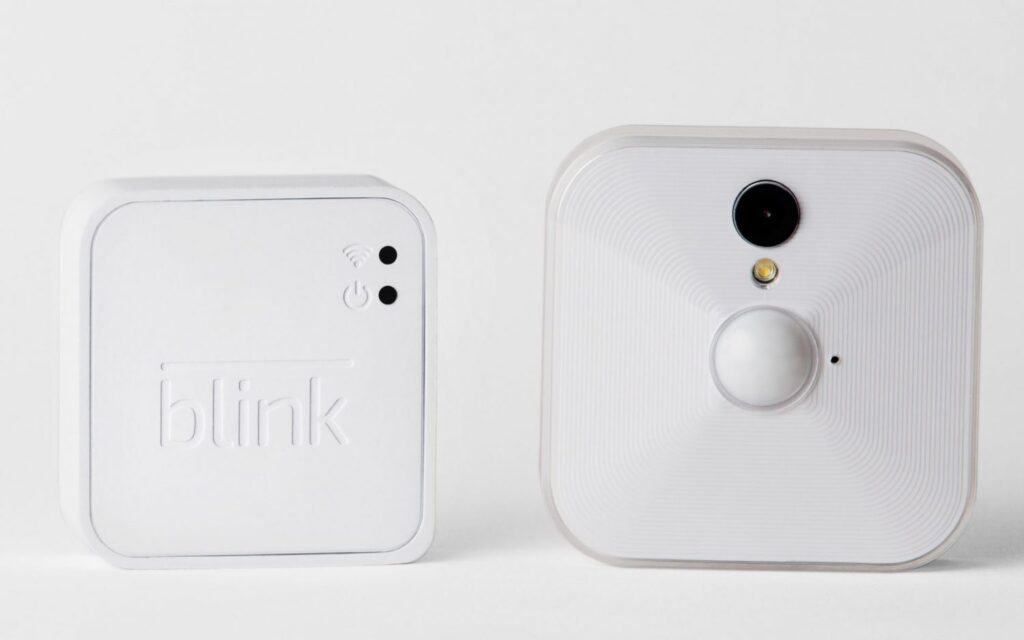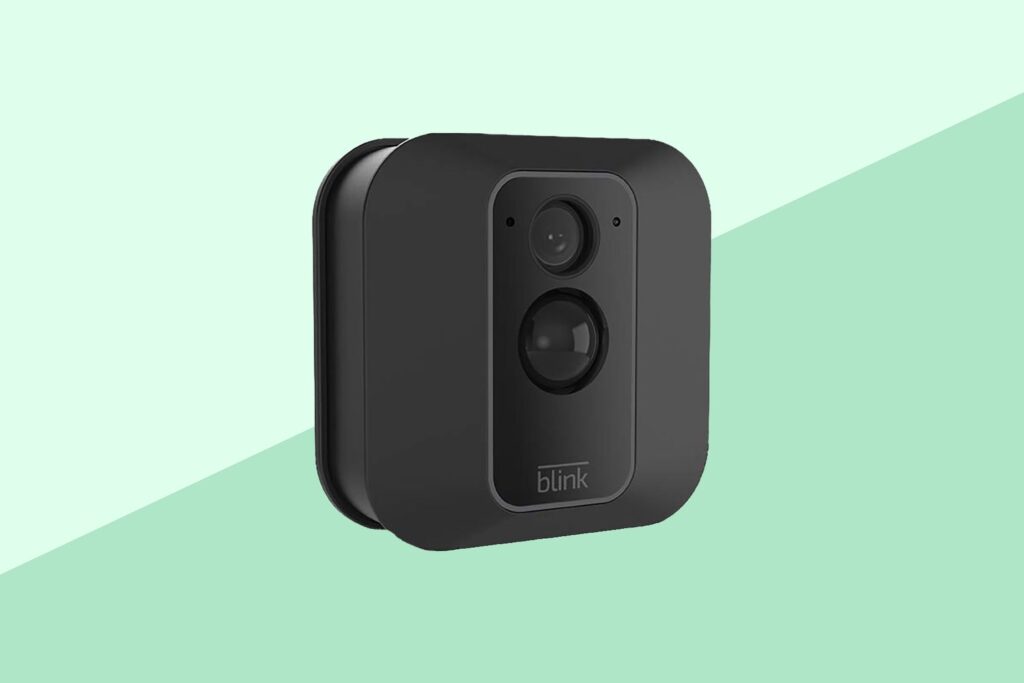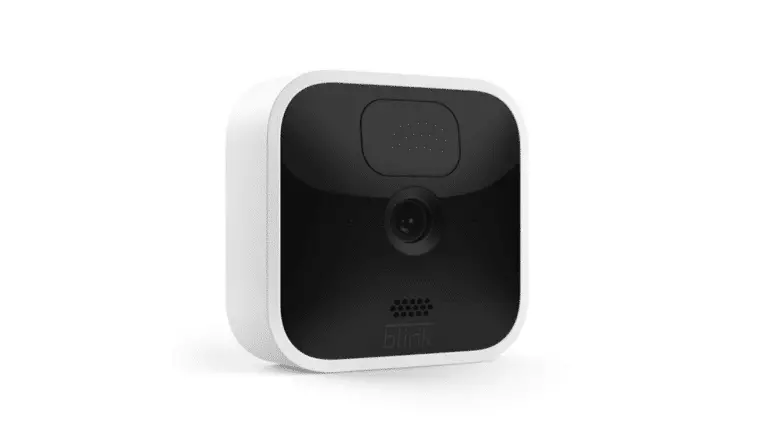Introduction
How Far Can A Blink Camera Be From The Module: In recent years, home security has become a paramount concern for homeowners and renters alike. The advent of smart security systems has revolutionized the way we protect our homes, introducing a wide array of innovative devices. Among these, Blink cameras have emerged as popular choices due to their user-friendly features and wireless functionality. With easy installation and a reputation for delivering high-quality surveillance footage, Blink cameras have captured the attention of many seeking an effective and accessible home security solution.
One of the key aspects that users often consider when deploying a Blink camera system is its range – the distance between the camera and the module. The range is an important factor that can significantly impact the camera’s performance and effectiveness in monitoring a property. The objective of this study is to explore the factors influencing the distance a Blink camera can be positioned from the module, and how this affects the overall functionality of the system.
The technical specifications of Blink cameras, examining the wireless communication technologies employed, such as Wi-Fi or Bluetooth, to understand their inherent limitations in terms of range. Additionally, environmental factors can also influence the effective range of these cameras. We will investigate how physical obstructions, interference from other electronic devices, and weather conditions can impact the signal strength and communication stability between the camera and the module.

What is the range of blink camera signal?
What is the range of a Blink camera? Blink cameras work within 100 feet of the Blink Sync Module 2, which bridges the cameras to the mobile app and your home Wi-Fi network. The cameras can detect motion up to 20 feet from the camera.
In a typical situation (single building, no unusually dense construction materials), the Sync Module should be able to communicate with Blink cameras up to 100 ft. (30m) away in any direction.
Blink camera signals vary depending on the camera model and deployment circumstances. Blink cameras communicate with their central module, which stores and controls data, over Wi-Fi.
In a clear location, most Blink cameras have a signal range of 100 feet (30 meters). The camera can communicate with the module at this distance. However, walls, doors, and other impediments can reduce signal range.
Real-world effective range depends on property layout and structure. Thick barriers, electronic interference, and bad weather diminish camera signal strength and range. Users should place the Blink module centrally and close to the cameras for best performance. To identify the ideal camera positioning for signal stability, they can experiment.
How many cameras can 1 Blink module hold?
Ten cameras
One account can manage several Sync Module setups and their associated Blink devices with the Blink app. Each Sync Module lets you handle up to ten cameras in one system.
One Blink module supports ten cameras. You may sync up to 10 Blink cameras to a single Blink module to create a complete and flexible home security system.
Connecting many cameras to a module has many benefits. It allows consumers to monitor more areas using surveillance, guaranteeing that property attractions are always monitored. Blink modules’ multi-camera functionality lets you monitor several access points, your garden, or individual rooms.
Multi-camera management from a single module simplifies setup and lowers clutter by eliminating the need for distinct modules. The easy Blink app or web interface lets you monitor and operate all cameras at once.
Do you need a module for every blink camera?
The Sync Module is required for Blink Outdoor and Indoor cameras, but optional for Wired Floodlight, Video Doorbell, and Mini. Doorbell Sync Modules extend battery life.
Blink cameras can work alone or with a module, unlike some home security systems that need a hub for each camera.
Each Blink camera has independent Wi-Fi. If you have multiple Blink cameras and wish to centralize their control and storage, choose a Sync Module or Sync Module 2. Each camera links to a central module that saves, syncs, and offers Blink app remote access. Multi-camera modules simplify home security. It reduces Wi-Fi connections and streamlines setup.
Do Blink cameras connect to Wi-Fi or Sync module?
Because the Sync Module facilitates connections between Blink devices and our secure servers, your camera needs local Wi-Fi. Blink Mini, Video Doorbell, and Wired Floodlight broadcast local Wi-Fi routes to communicate without Sync Modules.
Users can connect Blink cameras to Wi-Fi networks and a Blink Sync module for flexible home security.
A Blink camera may connect to your home Wi-Fi network without a Sync module. This standalone connection lets you access the camera’s live feed and saved footage via the Blink app or web interface. This option is for those with one Blink camera or who don’t need the Sync module’s advanced features and synchronization.
Sync acts as the core hub for Blink cameras with numerous users or those desiring consolidated management and storage. Sync module connects Blink cameras to your Wi-Fi network wirelessly. This central solution simplifies deployment, lowers Wi-Fi connections, and allows synchronized recordings and Blink app remote access.
How do I extend my blink camera range?
Blink’s original Indoor, XT, and XT2 cameras exclusively use the Sync Module’s Wi-Fi SSID. Setting up these cameras using an extender requires renaming the Wi-Fi extender SSID and using the primary network password.
Extending the range of your Blink camera can be essential for ensuring comprehensive surveillance coverage of your property. Although Blink cameras have a reasonable signal range, certain strategies can help optimize and extend their reach:
Positioning the Sync Module: Place the Blink Sync module in a central location, preferably near the cameras or within line-of-sight. This can help improve communication between the cameras and the module.
Minimize Obstructions: Ensure there are minimal physical barriers between the cameras and the Sync module. Avoid placing the cameras behind thick walls or large metal objects that could obstruct the wireless signal.
Use Wi-Fi Extenders/Repeaters: Wi-Fi extenders or repeaters can amplify your home Wi-Fi signal, extending its range and improving coverage to reach the cameras in distant areas.
Optimize Wi-Fi Network: Ensure your Wi-Fi network is operating on the least congested channel and use a strong password to prevent unauthorized access that might interfere with the cameras’ communication.
Consider Mesh Wi-Fi Systems: Upgrading to a mesh Wi-Fi system can enhance overall network coverage, ensuring a strong and stable connection for your Blink cameras.
Weatherproofing and Protection: In outdoor installations, use weatherproof housing for the Sync module and ensure all connections are secure to withstand adverse weather conditions.
Reduce Interference: Keep electronic devices that may cause interference, like baby monitors or microwave ovens, away from the Blink cameras and the Sync module.

Do Blink cameras work without Wi-Fi?
Blink cameras’ ability to work without Wi-Fi is their most crucial feature. This makes them perfect for security system users who cannot or do not want to use Wi-Fi.
Blink cameras perform best with Wi-Fi and a reliable internet connection. Blink camera functions may be limited or unavailable without Wi-Fi.
Cameras can collect and save video on their internal storage without an internet connection, but they cannot remotely monitor or view. Live feeds, motion alerts, and recorded footage on the Blink app or website are blocked.
The cameras cannot communicate with the Blink Sync module, which stores and synchronizes data, without Wi-Fi. The Sync module’s multi-camera and centralized management will be unavailable.
When Wi-Fi is unavailable, Blink cameras like the Blink Outdoor can record videos to a USB flash drive. Local storage lets the camera keep recording, but you must physically reach it to get the data from the USB drive.
Does the Blink module record?
The Sync Module 2’s USB port and compatible USB flash drive save video clips locally. The Sync Module saves footage from all cameras it manages to the USB drive after you add it to your Blink account and safely insert the USB disk.
The Blink module, also known as the Sync Module or Sync Module 2, connects the cameras to the cloud storage service. The Blink module does not record video or audio because it has no built-in storage. Instead, the Blink module gets signals from the Blink cameras when motion is detected or when you manually record. Video clips are securely kept on Blink cloud servers after the module sends them.
Video can be viewed, downloaded, or shared remotely using the Blink app or online interface. Blink’s membership tiers offer various cloud storage options for video recordings. Subscriptions allow customers to view their video history and store essential footage in the cloud for longer.
Why is my blink camera not detecting motion far away?
There could be several reasons your Blink camera sometimes does not work, including low battery or power supply issues, poor Wi-Fi connectivity, incorrect camera positioning, outdated firmware, or a malfunctioning camera. Try troubleshooting these potential issues or contacting Blink support for further assistance.
If your Blink camera is not detecting motion far away, there could be several reasons contributing to this issue:
Camera Placement: The camera might be positioned too far from the area you want to monitor, or it may be facing in the wrong direction. Ensure the camera is strategically placed to cover the desired area, and consider adjusting its angle or height for better coverage.
Signal Range: The distance between the camera and the Blink module (or Wi-Fi router) may be too far, causing a weak signal. This weak connection can lead to delayed or missed motion detection. Try moving the module or camera closer to each other or use Wi-Fi extenders to enhance the signal strength.
Obstructions: Physical barriers like walls, trees, or large objects may be obstructing the camera’s field of view, reducing its ability to detect motion far away. Clear any obstacles that might interfere with the camera’s line of sight.
Motion Sensitivity Settings: Check the motion sensitivity settings in the Blink app. If the sensitivity level is too low, the camera may not detect motion at a distance. Adjust the sensitivity level to a higher setting and test its performance.
Environmental Factors: Extreme weather conditions like heavy rain or fog may impact the camera’s motion detection capabilities, especially when trying to detect objects far away. Consider weatherproofing options or relocate the camera if necessary.
Camera Health: Ensure that the camera lens is clean and free from any debris or smudges that might obstruct its view.

Conclusion
The range of a Blink camera from its module plays a crucial role in determining the effectiveness and reliability of the entire home security system. Our investigation into this topic has shed light on several key factors that impact the maximum distance at which a Blink camera can be positioned from its module. The wireless communication technology used by Blink cameras, such as Wi-Fi or Bluetooth, sets the foundation for their range limitations. Users must be mindful of the specifications of their specific camera model to ensure optimal performance.
Physical obstructions and interference from other electronic devices can significantly affect the signal strength and stability between the camera and module. Therefore, it is essential to strategically position the module to minimize potential obstacles. Environmental factors, such as adverse weather conditions, can have a direct impact on the camera’s performance and range. Users residing in areas with extreme weather patterns must consider protective measures for the camera and module to ensure uninterrupted functionality.
Based on our research, we recommend that users adhere to the manufacturer’s guidelines regarding camera-to-module distance to achieve the best results. Testing different locations within the recommended range may help identify the optimal position for the camera within your specific property. Ultimately, the success of a Blink camera system lies in striking a balance between distance and communication stability. By making informed decisions about camera placement and understanding the limitations of wireless communication technologies, homeowners can ensure comprehensive surveillance coverage for their properties.

